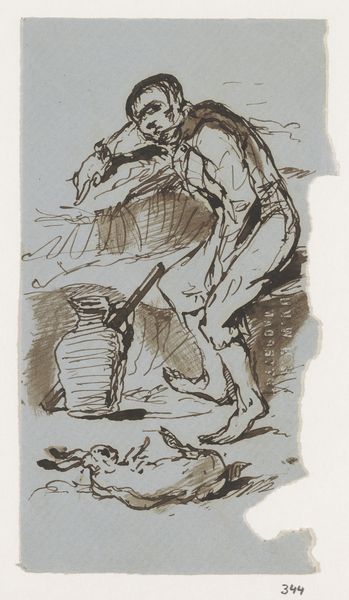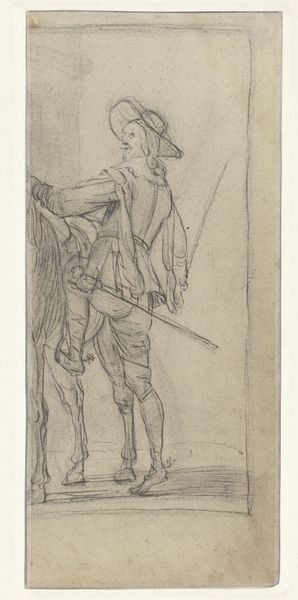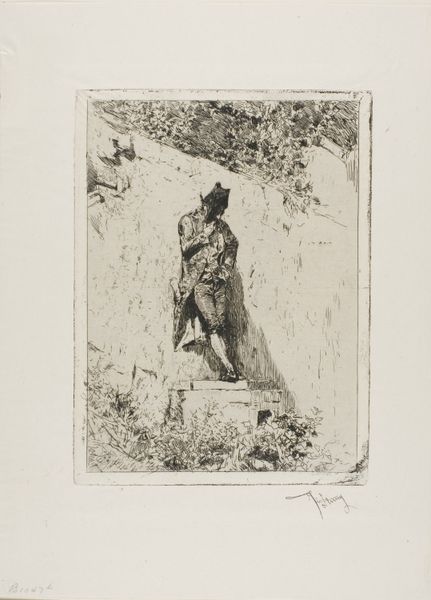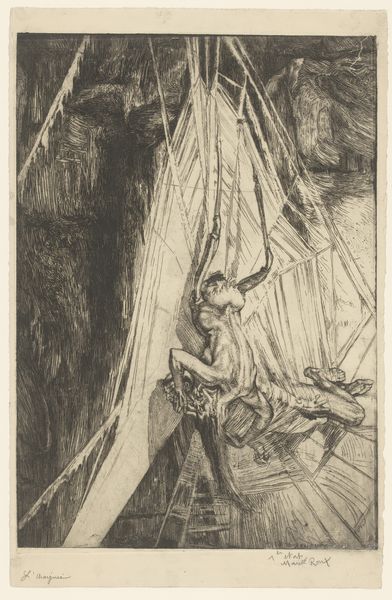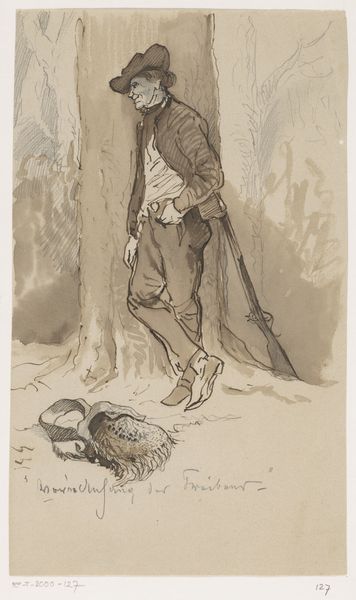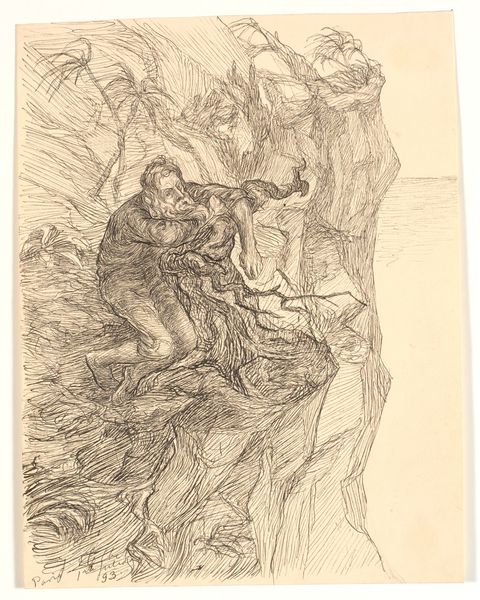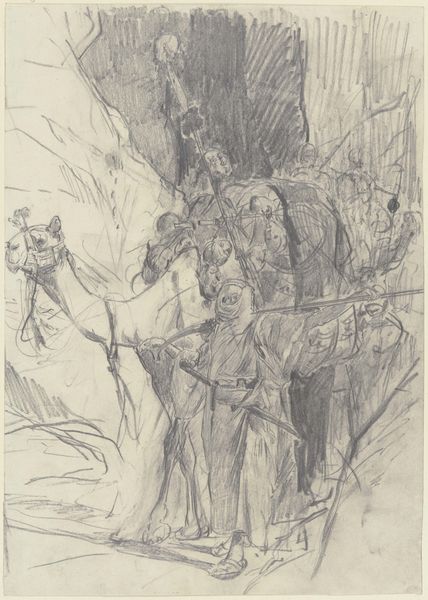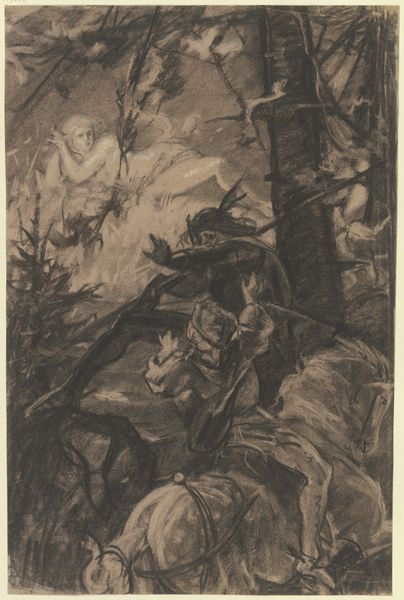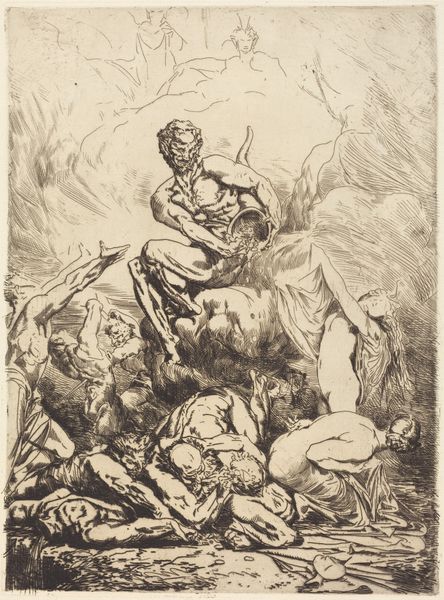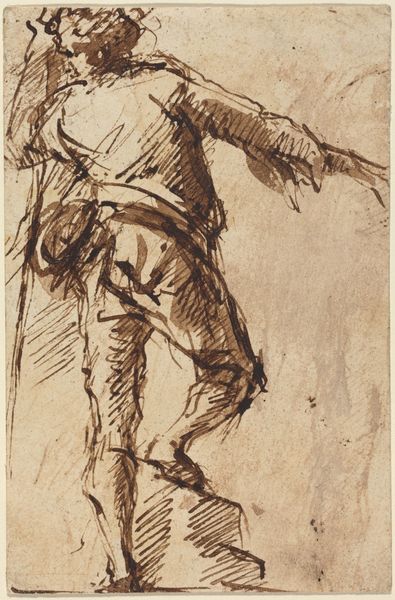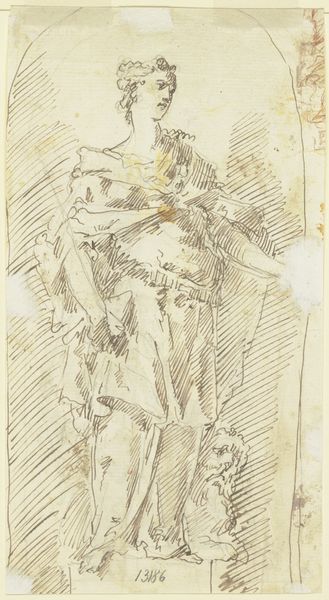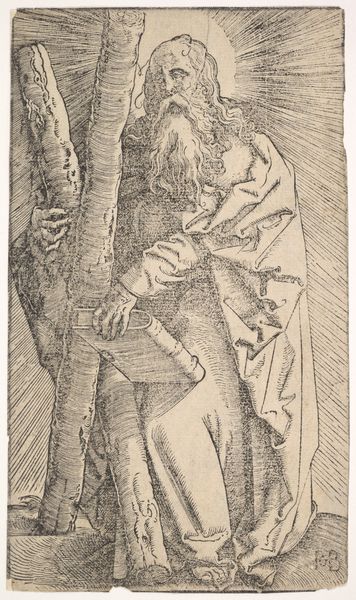
Dimensions: height 169 mm, width 100 mm
Copyright: Rijks Museum: Open Domain
Editor: So, this ink drawing is called "Tavenraat and his dog Milo" by Johannes Tavenraat, created sometime between 1840 and 1870. It's quite simple, just a man and his dog, rendered with swift strokes. There's a calmness, almost melancholy to it. What do you see in this piece beyond the obvious subject matter? Curator: I see a representation of man's dominion over nature, even in what appears to be a tender scene. The dog, Milo, is positioned subserviently, and Tavenraat himself, though rendered casually, is armed. This dynamic reflects the societal hierarchies prevalent in the 19th century, where land ownership and hunting rights signified power and status. The suggestion of the mountain backdrop is less about a celebration of nature, but about mankind's ability to tame and exploit it. Do you think there is a tension between this romantic idealisation of nature and the power dynamic depicted here? Editor: I hadn’t considered the power dynamic so explicitly, but it’s definitely there. It makes me think about colonialism and the ways in which landscape paintings, even seemingly innocent ones, reinforced ideas about ownership and control. Is that reading too much into it? Curator: Not at all. In fact, that is one entry point. The romantic movement in art frequently glossed over underlying issues of inequality and the violence required to create idyllic scenes. Consider who *doesn’t* get represented here – the farmers, the servants, the indigenous people displaced by such figures. That absence speaks volumes. It speaks to both intentional omissions and implicit assumptions of societal power structures that still hold meaning today. What we learn is that art-making doesn’t occur in a bubble. It carries with it baggage and belief systems. Editor: Wow, I’ll never look at a landscape or portrait the same way again. This really highlights how art can subtly perpetuate or challenge social norms. Thank you. Curator: And thank you for noticing such a thing. Asking difficult questions of art like this can offer new insights into who we are today.
Comments
No comments
Be the first to comment and join the conversation on the ultimate creative platform.

